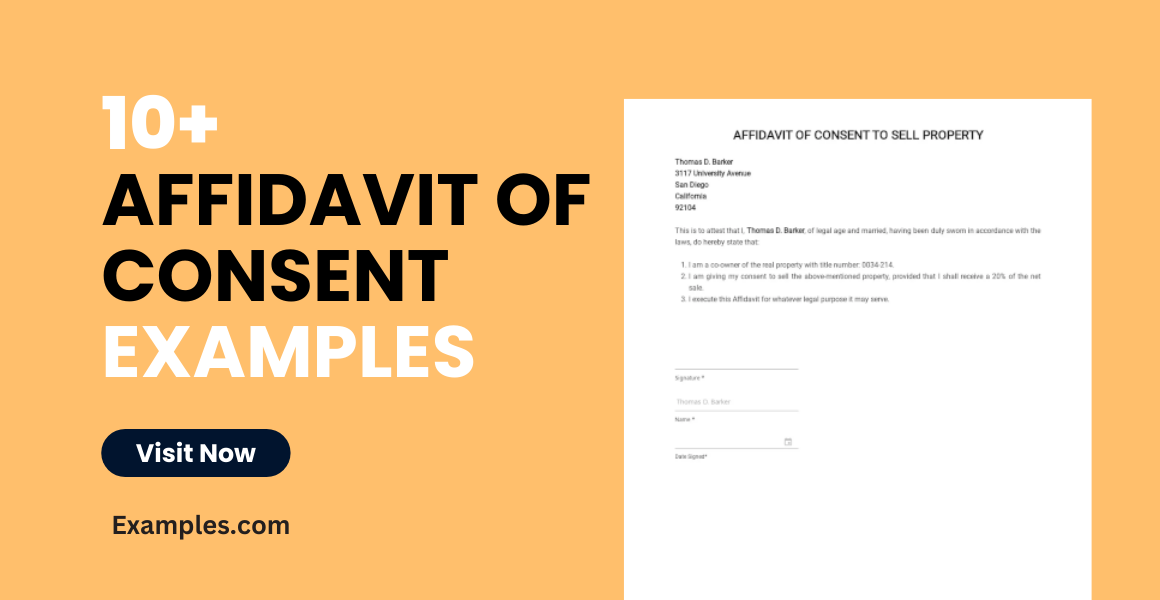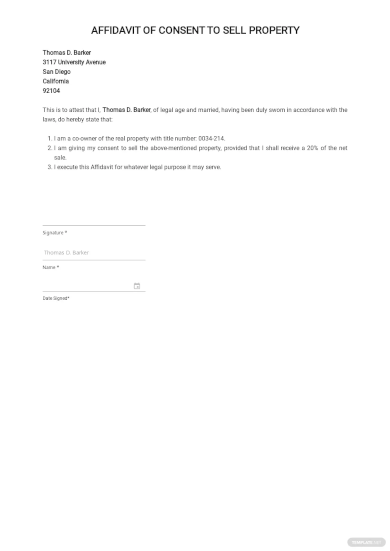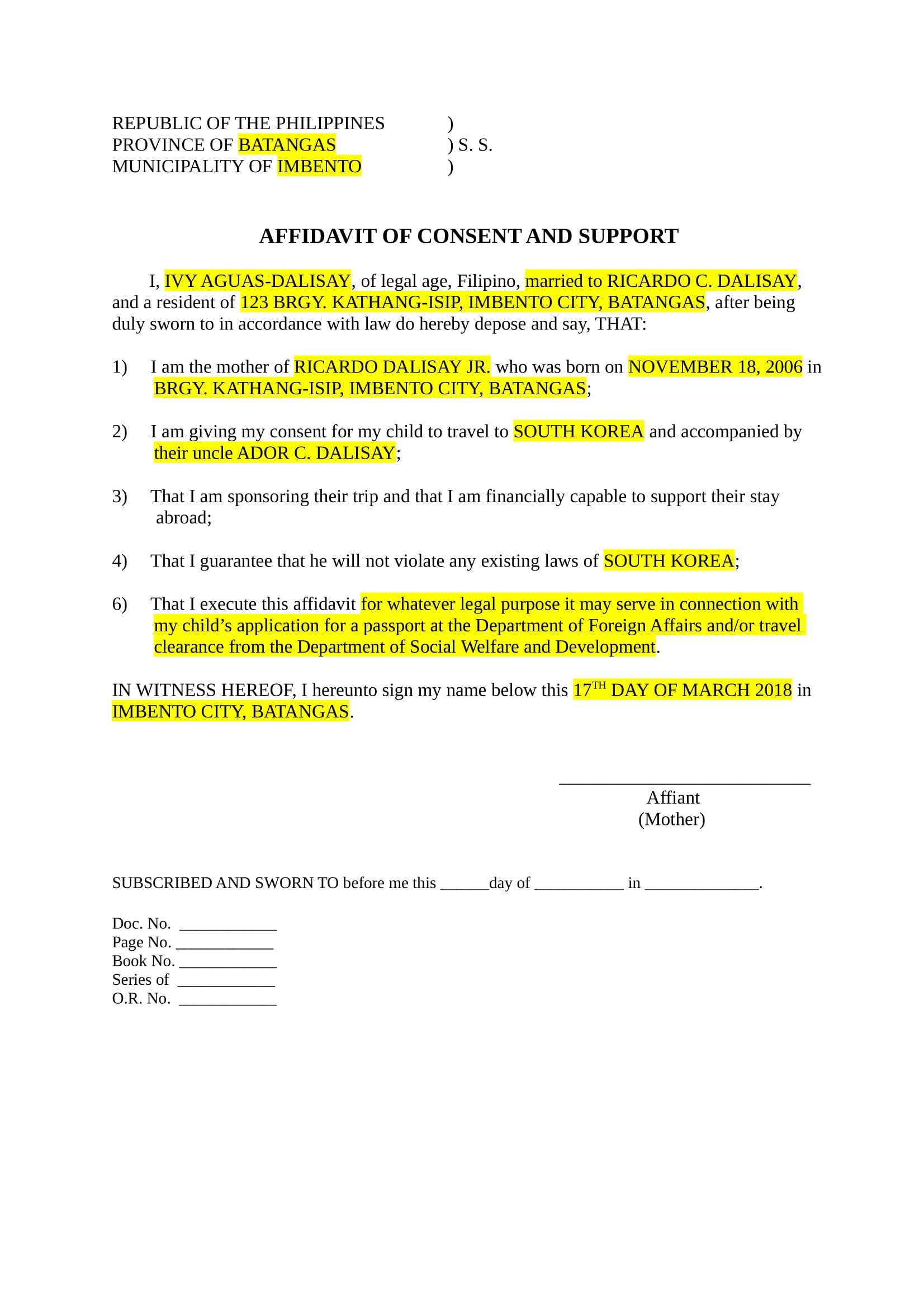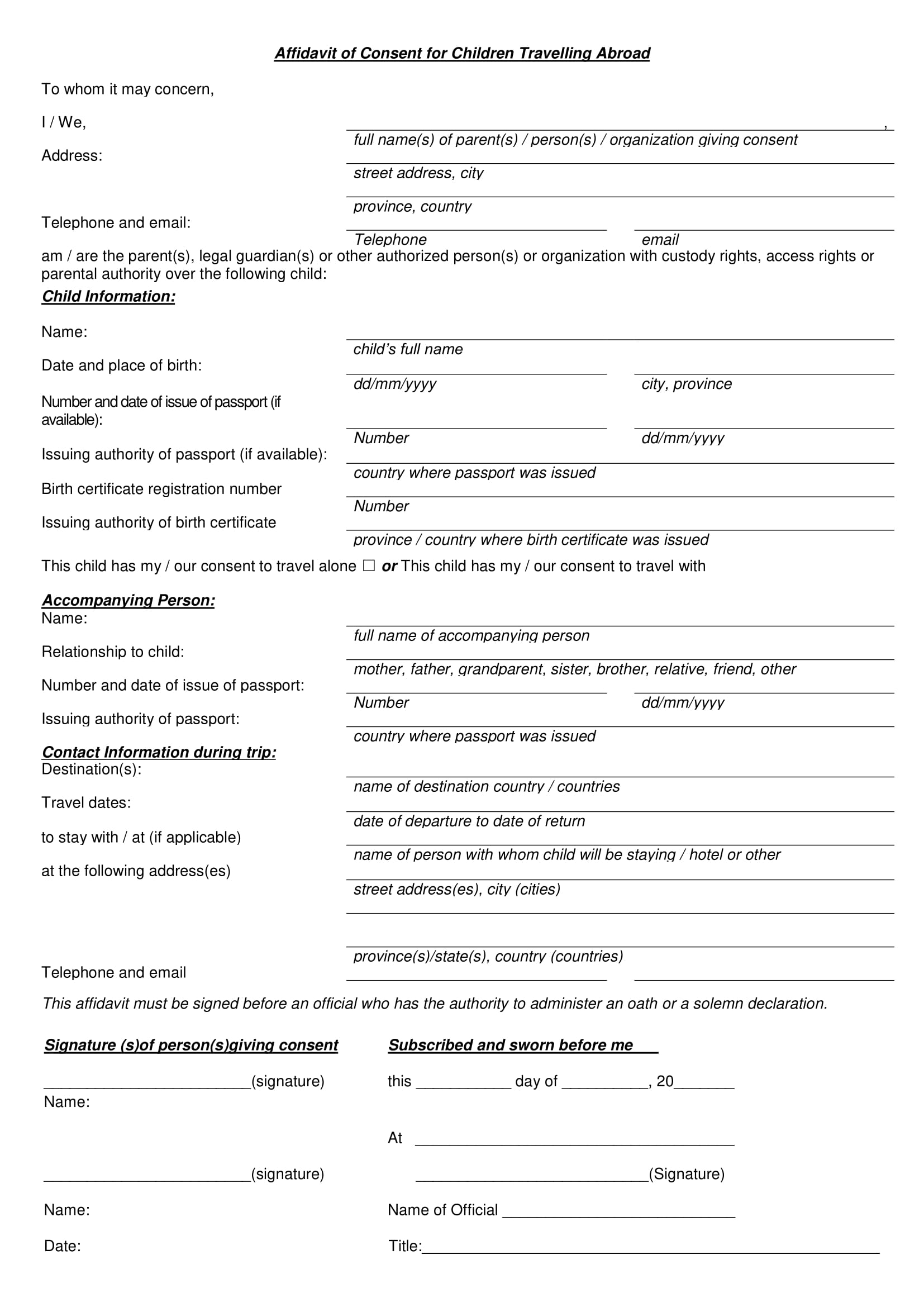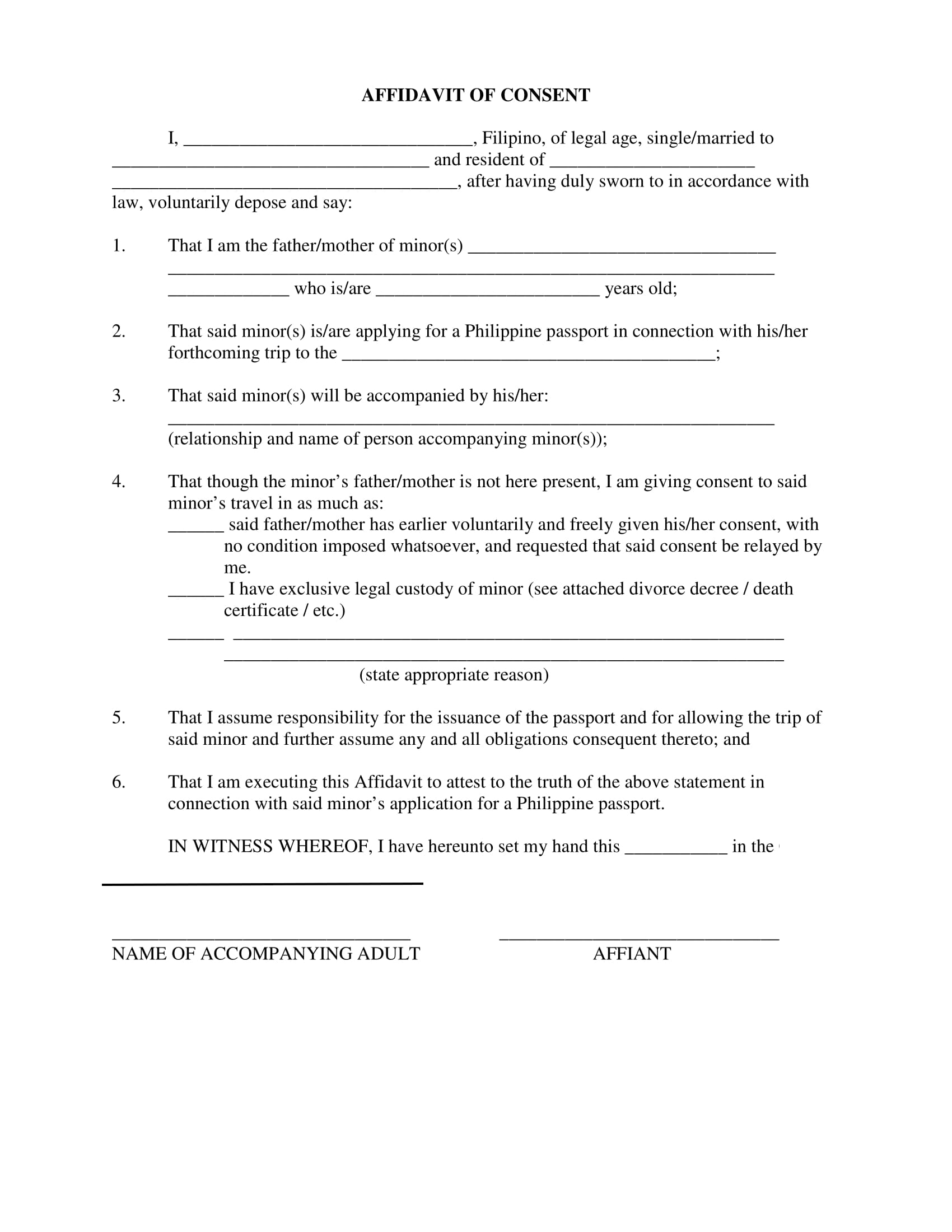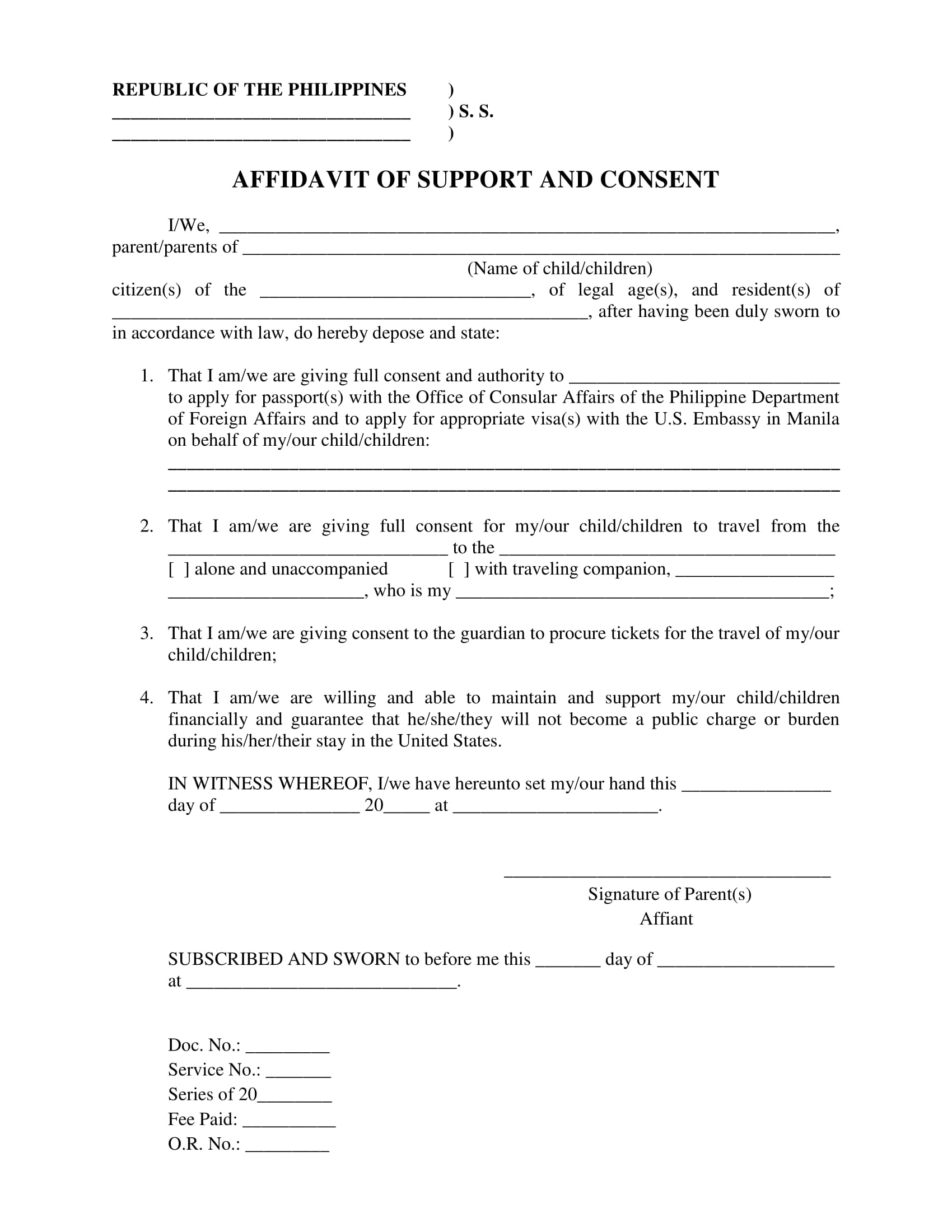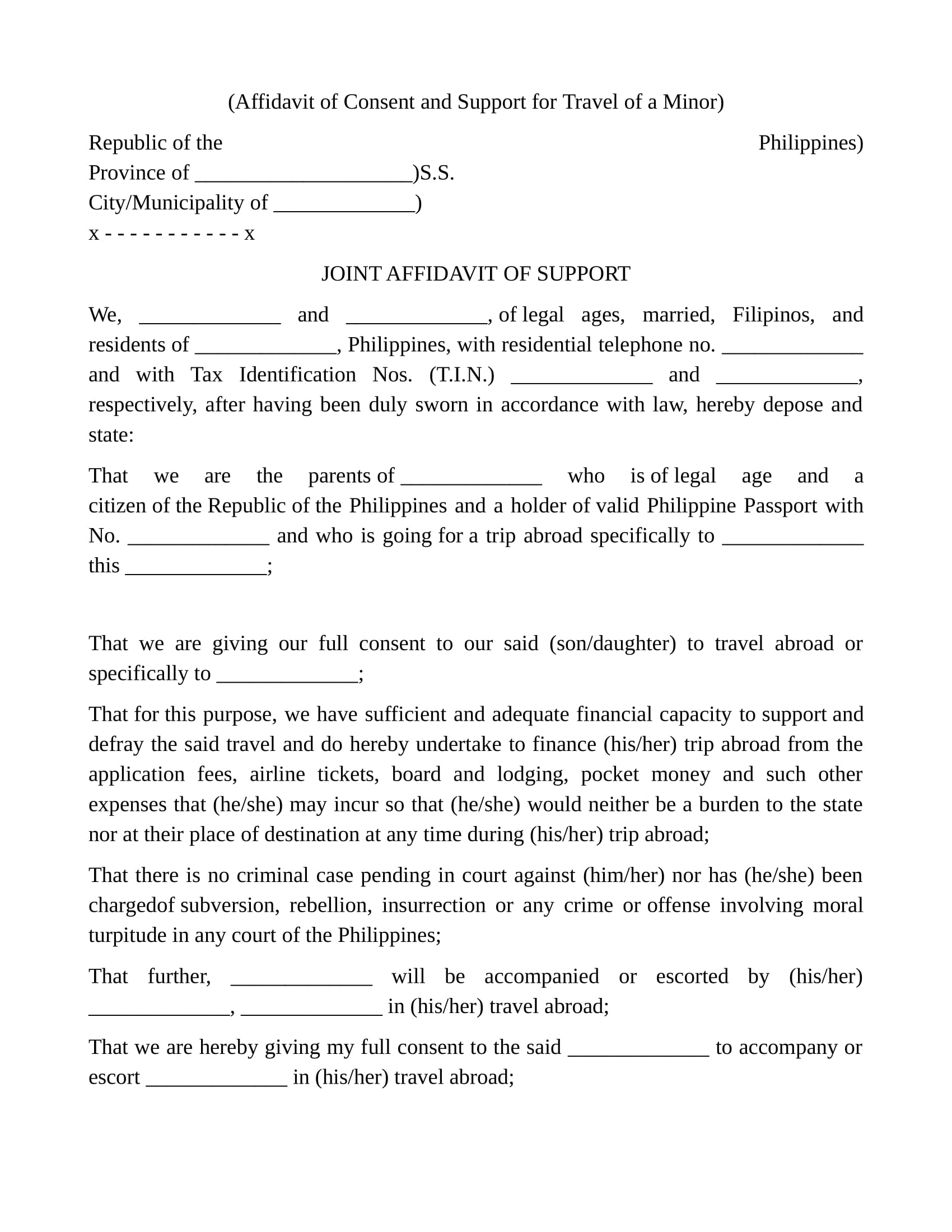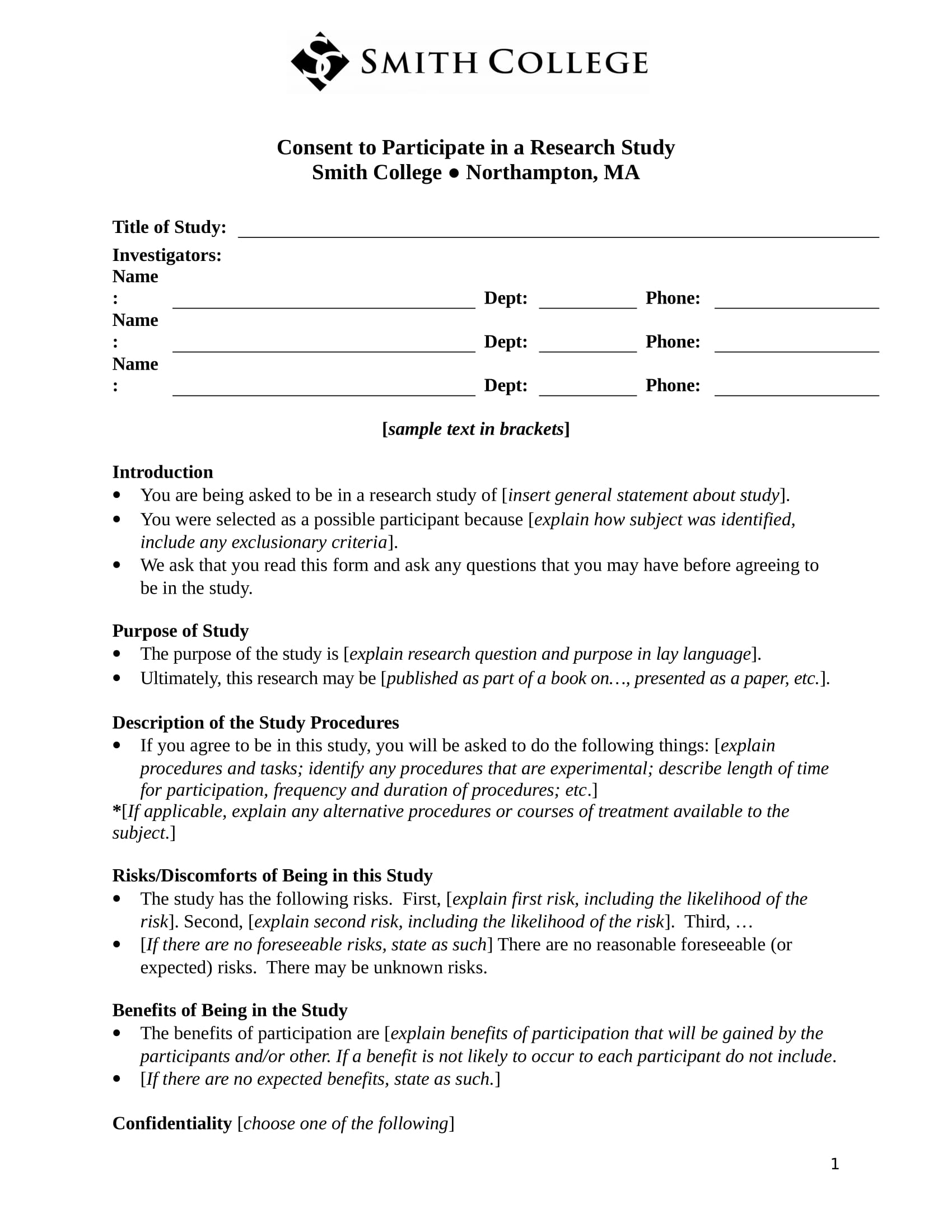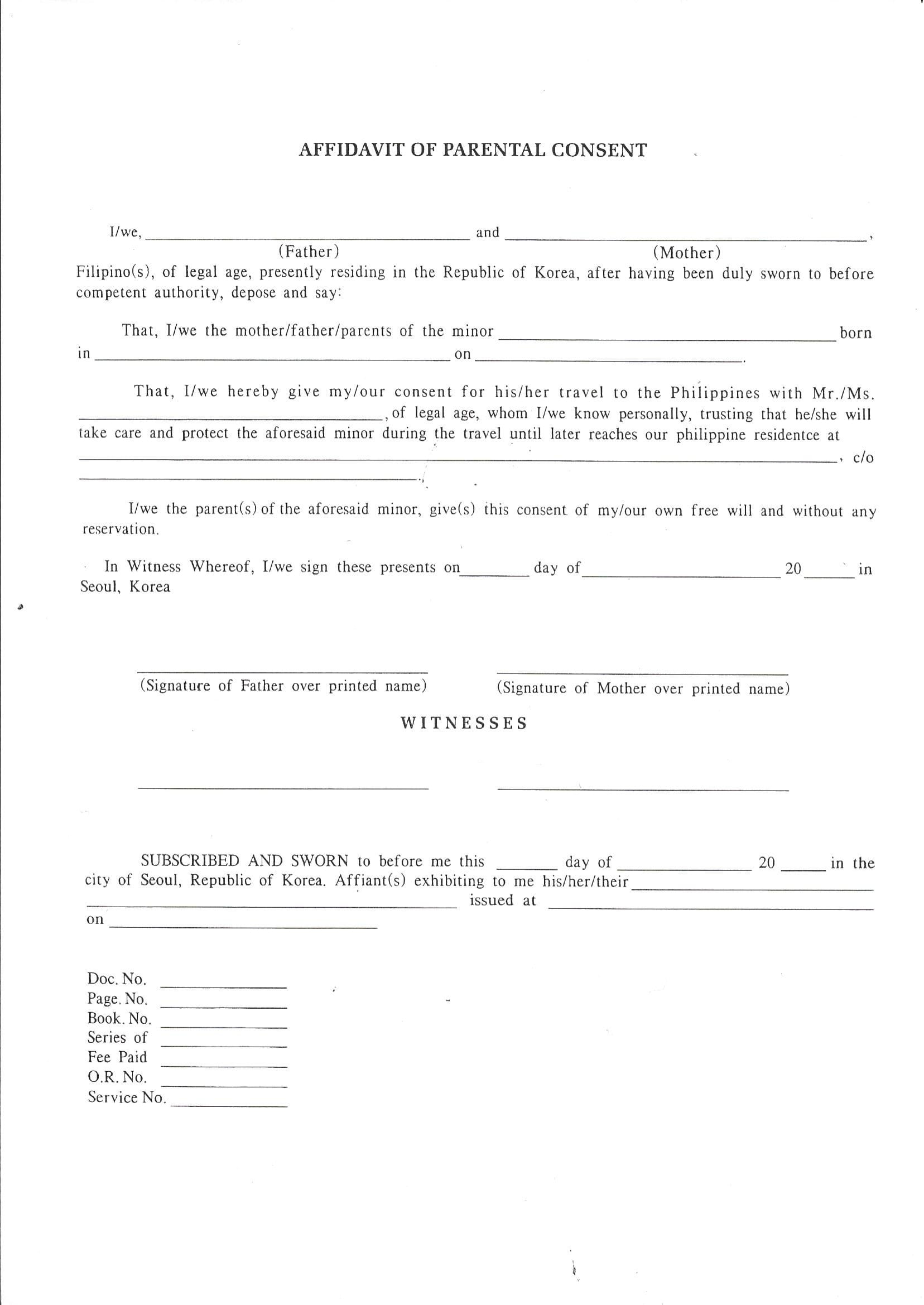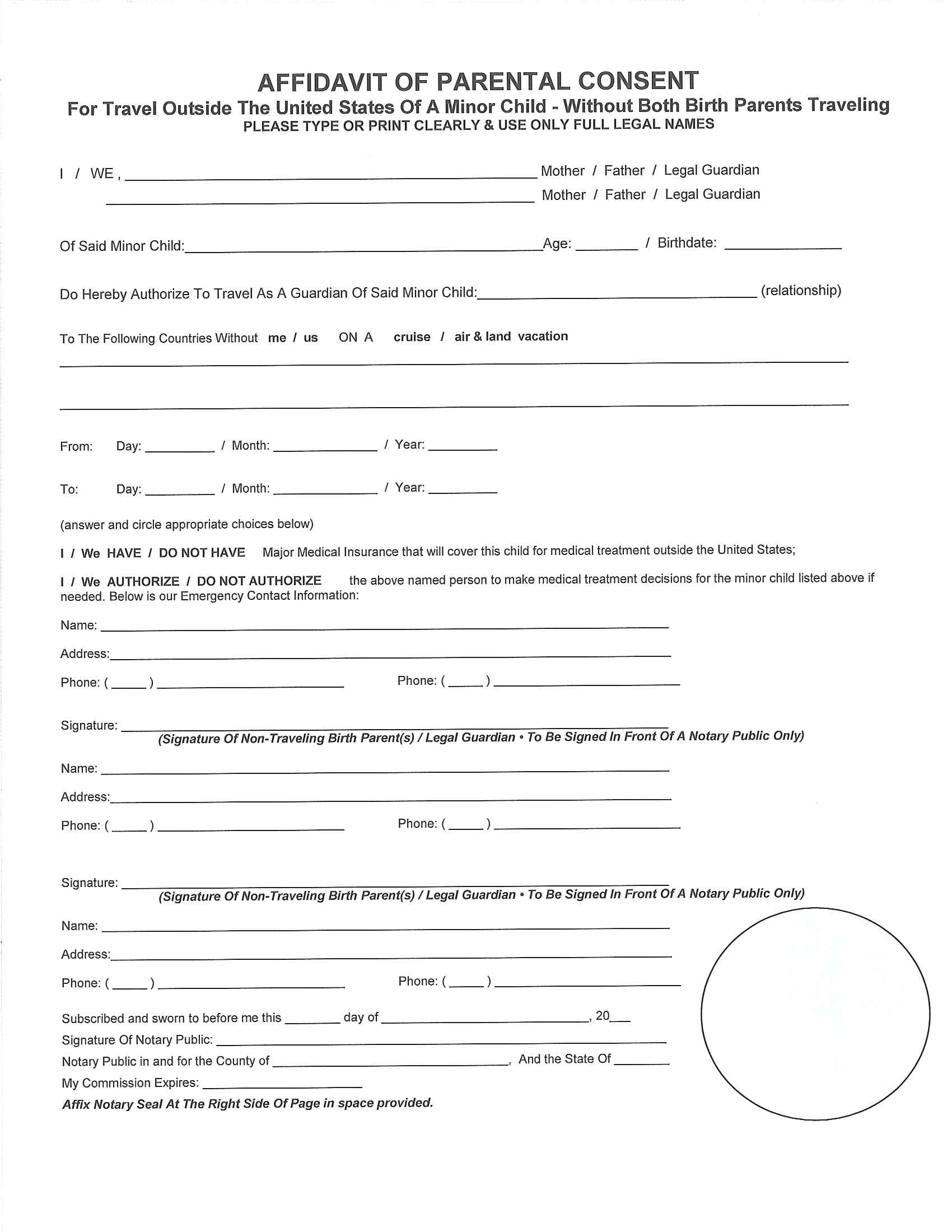10+ Affidavit of Consent Examples to Download
If you have a kid still studying in school, and he is active in many activities, it will not be too long before he gets the chance to be travelling to some places. If he is active in sports activities, he may have the chance he will be sent to places for a competition. Or if he is good at spelling, he may be sent out for a spelling bee competition. Or if he is good at drawing, painting, speaking, and the countless activities that he is good at, there will come a time that he will be going out to some places that need your consent.
When that happens, the organizers in the school will ask the parents’ kids their consent that they be sent out to represent in an event. In lay man’s term, it is simply called consent. A consent can be as simple as a vocal agreement, or in a letter. However, there is a more professional, legal way of preparing a consent, and it is called affidavit of consent.
Affidavit of Consent to Sell Property Template
Affidavit of Consent PH Example
What Is an Affidavit of Consent?
An affidavit of consent is any written agreement, with the affiant making a sworn statement that his or her children, for example, be allowed to be sent to or be taken somewhere else for some academic or non-academic activities. The parent of the student, in an affidavit, becomes the affiant, which means he or she will make a sworn statement allowing his or her kids to be involved in a specific activity that may require special permission from the parents. By doing so, the parents are sort of involved in the said activities.
But the parents’ consent is just basic, as compared to an affidavit of consent because in an affidavit of consent, there is a notary. A notary is someone who is licensed to formalize and make a document legal. In some places, he is a barrister. In other places, he is the lawyer. And in some other place, he is a solicitor. A parents’ consent can be in a form of a slip, or a letter. It can be written by the school in charge and may require a parent’s signature.
Consent Example in Sentence
Consent can be demonstrated through both action (verb) and agreement (noun). Here are succinct examples:
As a Verb
- She consented to the interview after hesitating.
- The teacher consented to the class trip upon receiving a detailed plan.
As a Noun
- He gave his consent for the surgery after discussing it with the doctor.
- Consent from all participants was required before starting the project.
Affidavit of Consent for Children Example
There are levels in a consent. The one mentioned above, parental consent, is very common and it explains basically the dynamics of any consent.
Let us try to understand consent in the comparison of the following:
Oral Consent vs. Written Consent
An oral consent is made verbally, spoken agreement among the people involved. For example, in a school setting, the people involved are the school teachers and the parents. When a school principal enters an agreement with the student’s parent without a document, just mere chat, that consent is only oral.
An affidavit of consent is obviously not an oral consent, as the people involved are asked to make their signatures, respectively.
Affidavit of Consent Example
The written consent is always superior to the non-document consent as the former can always be reviewed by both parties should there be a need for verification. If a problem arises, emergency or any accident, both parties can always go back to the letter, the document in which they have made an agreement.
For example, there is an agreement for both parties that allow the parent’s kid to join in a choral competition to be held in a faraway place. And suddenly after the event, that is, the choral competition, is finished, the relatives of the child question the school in charge, the superiors, the people who organized the kids. Their only defense is the paper on which the parent swore to agree. If there’s no paper to go back to, the argument would be endless. So what is an example of an oral consent?
Affidavit of Support and Consent Example
There are cases when you do not really need a written consent, such as a boy asking her girlfriend to go on a date. The boy would not need to let the girl’s mother to sign in a document because it is not only weird, but also, it is not a practice.
A consent can also be understood on its level of intensity, such as in the following comparison:
- Explicit consent. Any consent when done with a strong intention is usually a form of explicitness. An affidavit of consent is a form of explicit consent because not only are there signatories, but also there are witnesses, there is a sworn statement.
- Implicit consent. As the word implies, the consent is implied and not direct. A good example is you go shopping with someone, without him asking that you should go with him. There is a connection between the two of you, there is that silent command telling that you go with him, without any talking or direct mentioning of going out. This can happen when you are with your close friends or relative.
Affidavit of Consent Form Example
This is not the case with an affidavit of consent. In an affidavit of consent, people think too much before saying things aloud, before writing something on the document.
A parental consent can be very formal, serious, and legal when financial matters become involved. In such case, it should become an affidavit of consent. This is the case when parents are asked permission for their children to be left by someone’s care, not simply as guardian in a school camp, but as a financial and an overall supporter as well.
Affidavit of Consent and Support Example
This is the case in which another term comes in. And many mistake or confuse this with consent. The term is waiver. If you remember when your kids were sent out to compete in a game with other schools, chances are you received a letter of consent. Or was it really a consent or a waiver? And if so, will it matter?
There is a difference between the two; it can be subtle as telling sugar from salt. And yes, it matters. If you choose consent, the emphasis would be more about you as parent, in a scenario given above, allowing your kids to be taken care of by someone. A waiver is different, in that the one asking it, for example, the school organizers, not only ask your permission for them to handle your kids, but also request that they will not be held liable if in case something happens to your kid. In other words, they are asking a protection.
Consent to Participate Form Example
So did you receive a waiver letter or a consent letter? You would not remember. But the good thing is, nothing happened to your kid when they went out for an overnight outing to compete in an inter-school athletic game.
But had you signed for a waiver, and then an accident happened during their outing, chances are the school would have escaped from the burdens that naturally a guardian or godparents should face.
That is why less people would use the term waiver and would instead use the term informed consent. In an informed consent, the request is softer, less harsh for the side of the parents, for example.
Now, you have a clearer understanding what an affidavit of consent is all about, as well as its nuances. If you are a school administrator and you need to produce an affidavit of consent, you should have one already in the archives of your computer, a template or a blank affidavit of consent form. Otherwise, there are many forms available online, ready for you to download. If you should need to write your own, here are some tips.
Parental Consent Affidavit Example
How to Prepare for an Affidavit of Consent
Make sure you to include all the necessary details. This would be the names of the people involved, the parents, the parents’ children, their birth dates, address, and contact details. For the school, make sure to include its complete registered name, the school heads, as well as the people to call in case of emergency.
The terms should also be laid on the table. If it is not a waiver, meaning the affiant does not guarantee any liabilities, at least, it should be established what the parents would expect from the school, as the children’s guardian. Will the school provide for the children’s food? Is there a diet program for the whole duration of the outing. How about the accommodation? What would be their sleeping condition? And how about the transportation? Are there some itineraries? Do you have a route? How much should the parents spend, or is it sponsored?
Affidavit of Parental Consent Example
The terms may not be included as part in the affidavit, but it should be discussed thoroughly with the parents. If possible, it should be written in another paper, and be given, furnished to the parents. That way, the parents can tell and feel how prepared the organizers are and that they have put effort in the planning of taking care of the children.
Affidavit of Parental Consent US Example
And lastly, since it is an affidavit, the document should have been prepared with a notary. That means, there is not just the parents, the school representative, or head but also a third-party witness. That makes it a true affidavit and not just a paper slip from the school to be signed by the parents.


